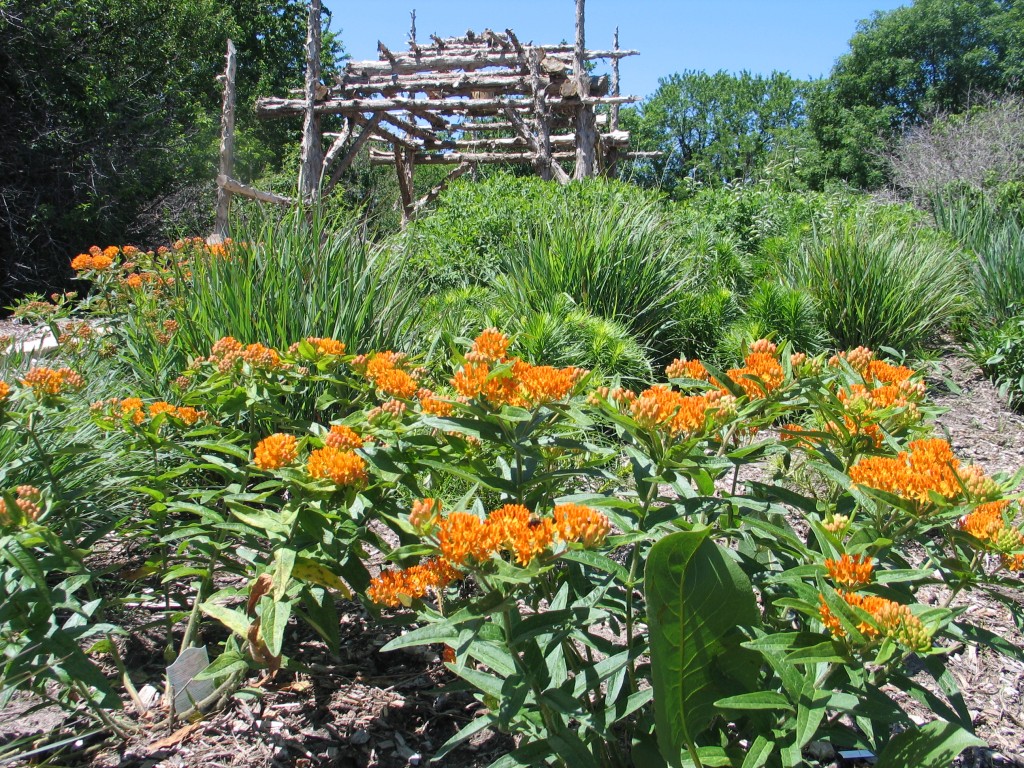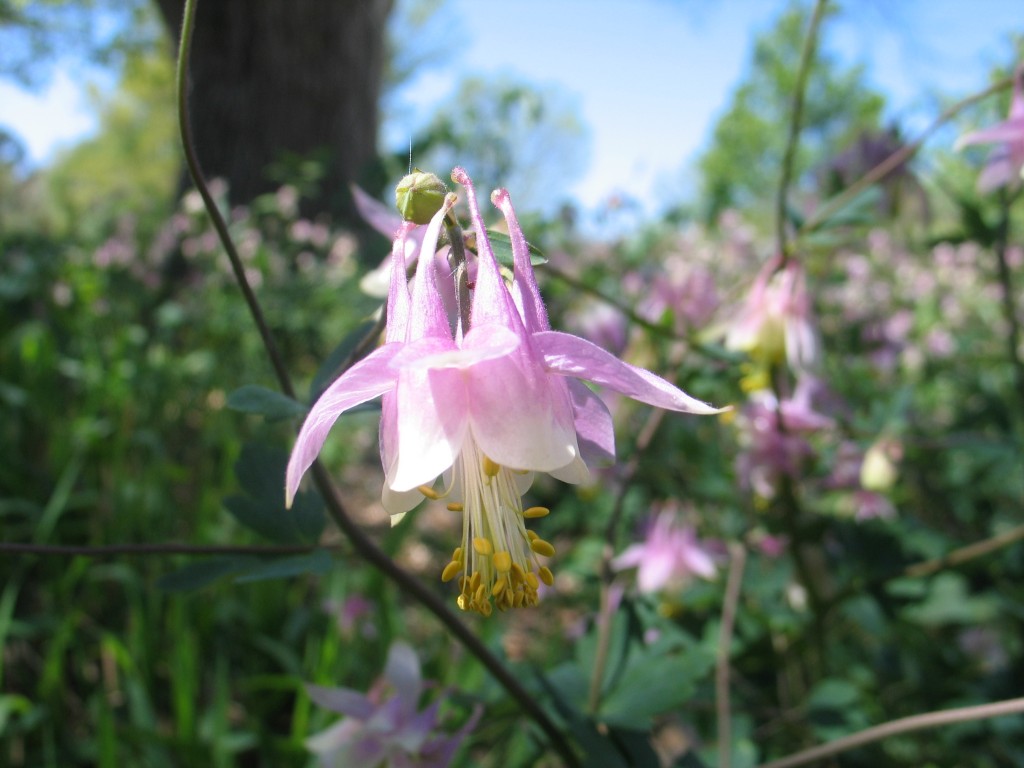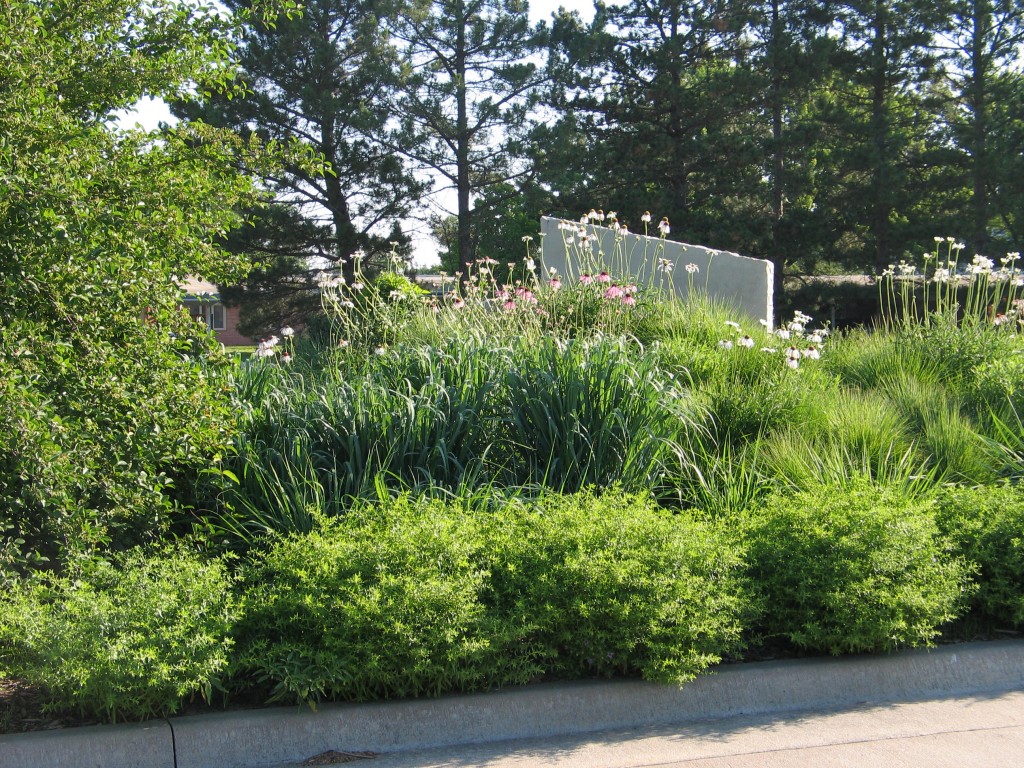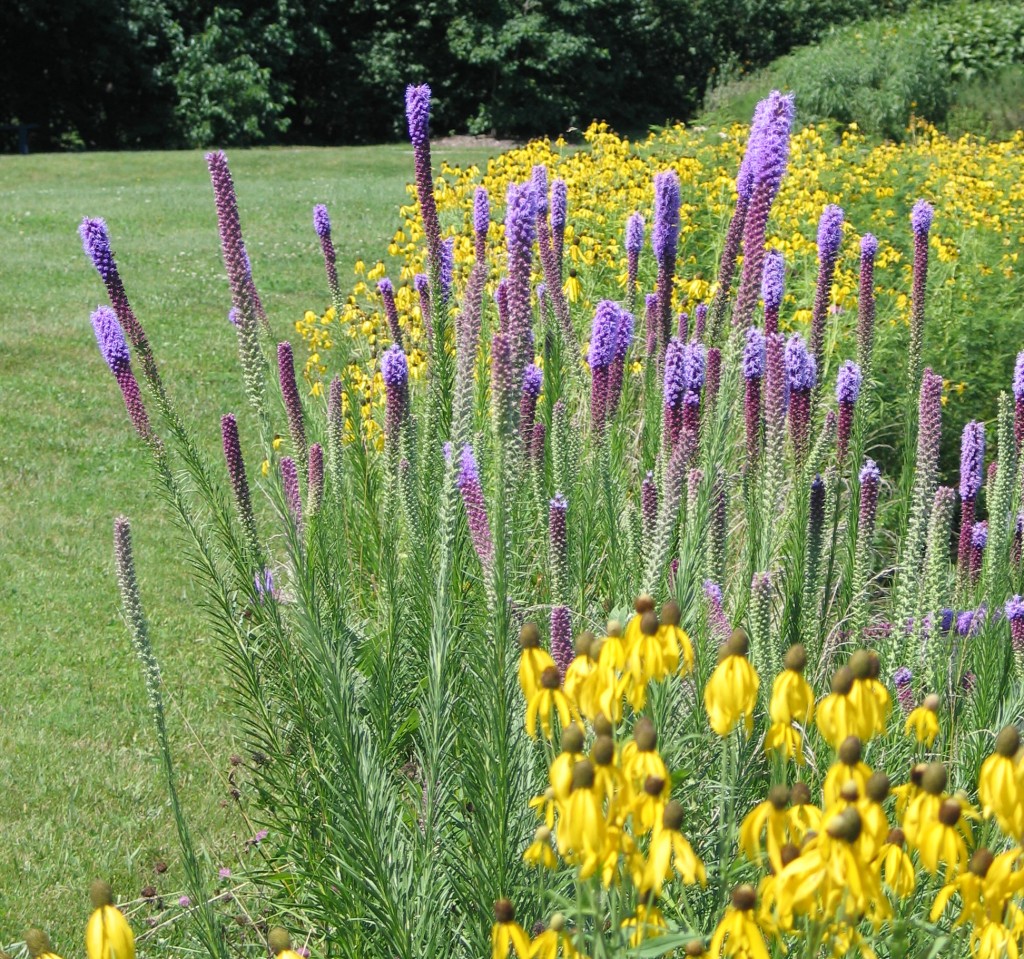One of the biggest criticisms of native plants is that they often look too wild, unkempt and messy. Grasses dominate while wildflowers struggle to provide the visual impact desired in a landscape. Wild is as wild does.
So how do we tame the wildness of the prairie? How do we design a native plant garden that doesn’t look so wild? Is it even possible? I believe it can be done. You can have the beauty of the prairie and all the benefits of a native ecosystem with a properly designed native garden.
Consider these fundamentals as you design your native plant garden:
Match plants to your site. Look at your landscape. Is it sunny or in the shade? Is the soil clay or sand? Evaluate these elements and choose plants that will thrive in the microclimate of your yard. Sun-loving native plants need at least 6 hours of direct sunlight to grow happily. Otherwise look at more shade-loving natives. A carefree landscape begins with matching plants with climate. Choose plants that occur in the same or similar climate for a maintenance free garden. It has been my experience that this is the most important element in developing a successful native garden. Anytime you stray too far off, the plants don’t flourish and they require more effort. Planting a swamp milkweed on a dry hill or a primrose in a bog will never work.
Design for succession of bloom. There are no Wave Petunias in the prairie or plants that bloom all season, so choose plants that will bloom in spring, summer and fall. If you go to the prairie throughout the year, you will observe wildflowers coming into or out of bloom. The prairie is constantly changing. Design with those changes in mind. Discover how native plants appear at different times of the year and highlight interesting elements such as seedheads for winter interest. Grasses can be included for structure, winter texture and movement. Little bluestem in fall accentuates the seedheads of the Missouri Black-eyed Susan beautifully.
Group similar plants together. Fifteen blazing stars blooming in the summer create a focal point in the landscape. Place them next to a spring blooming wildflower and a fall blooming wildflower and you have organized the display for year round interest. Use grasses sparingly to frame the garden or as a backdrop for some of your wildflowers. This makes it easier to maintain, because you know what is planted in each area. When weeding, you know everything else has to be removed because wildflowers will reseed.
Keep your plants in scale. Choose plants that don’t grow taller than half the bed width. So if your display bed is six feet wide choose plants that are no more than three feet tall. A compass plant would be way too tall.
Define the space. A well-designed native garden can be enhanced with a border. It can be edged with limestone, brick or some other natural material. This element alone makes your native garden look clean, attractive, and intentional. Even a clean-cut edge can really help define the garden’s borders.
Control Perennial Weeds. You will save yourself many headaches by eradicating problem weeds like bindweed and Bermuda grass before you plant. It is better to wait until these weeds are eliminated before you establish your new garden, trust me!!!
It sounds so easy, but we all know that landscapes, no matter how well-designed, will take some input on our part. Beautiful gardens don’t just happen. They are the result of planning, development, time and a little bit of effort.
I am still learning too. My epiphany came several years ago after trying to grow dry, sun loving plants in a wet, sunny garden. It took me three tries to realize the futility of my efforts. Hopefully, you can learn from these basic principles and find success in your landscape. If you need information about native plants, visit our plant library, landscape designs or give us a call.




